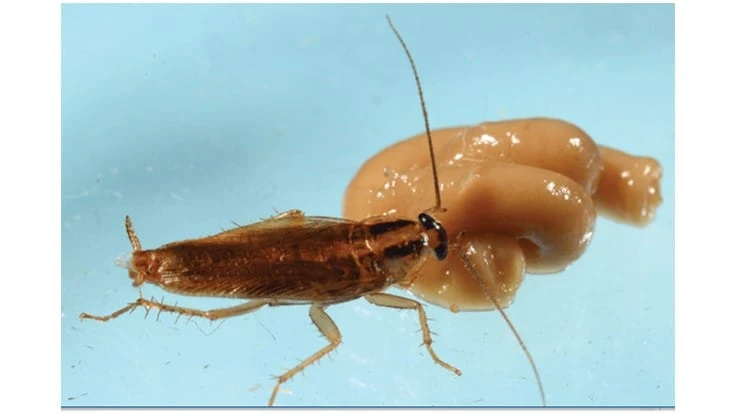

Cockroaches are serious threats to human health. They carry dozens of types of bacteria, such as E. coli and salmonella, that can sicken people. Additionally, the saliva, feces and body parts they leave behind may not only trigger allergies and asthma but could cause the condition in some children.
A Purdue University study led by Michael Scharf, professor and O.W. Rollins/Orkin Chair in the Department of Entomology, now finds evidence that German cockroaches (Blattella germanica L.) are becoming more difficult to eliminate as they develop cross-resistance to the pest management industry’s insecticides. The problem is especially prevalent in urban areas and in low-income or federally subsidized housing where resources to effectively combat the pests aren’t as available.
“This is a previously unrealized challenge in cockroaches,” said Scharf, whose findings were published in the journal Scientific Reports. “Cockroaches developing resistance to multiple classes of insecticides at once will make controlling these pests almost impossible with chemicals alone.”
Each class of insecticide works in a different way to kill cockroaches. Most PMPs will use insecticides that are a mixture of multiple classes or change classes from treatment to treatment. The hope is that even if a small percentage of cockroaches are resistant to one class, insecticides from other classes will eliminate them.
Scharf and his study co-authors set out to test those methods at multi-unit buildings in Indiana and Illinois over six months.
In one treatment, three insecticides from different classes were rotated into use each month for three months and then repeated. In the second, they used a mixture of two insecticides from different classes for six months. In the third, they chose an insecticide to which cockroaches had low-level starting resistance and used it the entire time.
In each location, cockroaches were captured before the study and lab-tested to determine the most effective insecticides for each treatment, setting up the scientists for the best possible outcomes.
“If you have the ability to test the roaches first and pick an insecticide that has low resistance, that ups the odds,” Scharf said. “But even then, we had trouble controlling populations.”
Rotating three insecticides, the researchers were able to keep cockroach populations flat over a six-month period, but they could not reduce them. The two-insecticide mixture did not work, and cockroach populations flourished.
In one of the single-insecticide experiments, Scharf and colleagues found that there was little starting resistance to the chosen insecticide, and they were able to all but eliminate the cockroach population. In the other, there was about 10 percent starting resistance. In that experiment, populations grew.
In later lab tests of the remaining cockroaches, Scharf and the team found that cross-resistance likely played a significant role. A certain percentage of cockroaches would be resistant to a particular class of pesticide. Those that survived a treatment — and their offspring — essentially gained immunity to that insecticide and resistence to other classes of insecticide; even if they hadn’t been exposed to the insecticides and did not have previous resistence.
“We would see resistance increase four- or six-fold in just one generation,” Scharf said. “We didn’t have a clue that something like that could happen this fast.”
Female cockroaches have a three-month reproductive cycle during which they can have up to 50 offspring. If even a small percentage of cockroaches is resistant to an insecticide, and those cockroaches gain cross-resistance, a population knocked down by a single treatment could explode again within months.
That’s why an integrated pest management approach is critical, Scharf said. He recommends combining chemical treatments with traps, improved sanitation and vacuums that can remove cockroaches.
“Some of these methods are more expensive than using only insecticides, but if those insecticides aren’t going to control or eliminate a population, you’re just throwing money away,” Scharf said. “Combining several methods will be the most effective way to eliminate cockroaches.”
The U.S. Department of Housing and Urban Development the O.W. Rollins/Orkin endowment in the Purdue Department of Entomology supported this research.
Source: Brian Wallheimer, Purdue University
Latest from Quality Assurance & Food Safety
- Bird Flu: What FSQA Professionals Need to Know
- Registration Open for 129th AFDO Annual Educational Conference
- Frank Yiannas, Aquatiq Partner to Expand Global Reach of Food Safety Culture
- World Food Safety Day 2025 Theme: Science in Action
- Ancera Launches Poultry Analytics System
- USDA Terminates Two Longstanding Food Safety Advisory Committees
- Catalyst Food Leaders Announces Virtual Leadership Summit for People in Food
- Food Safety Latam Summit 2025 Set for Mexico City





